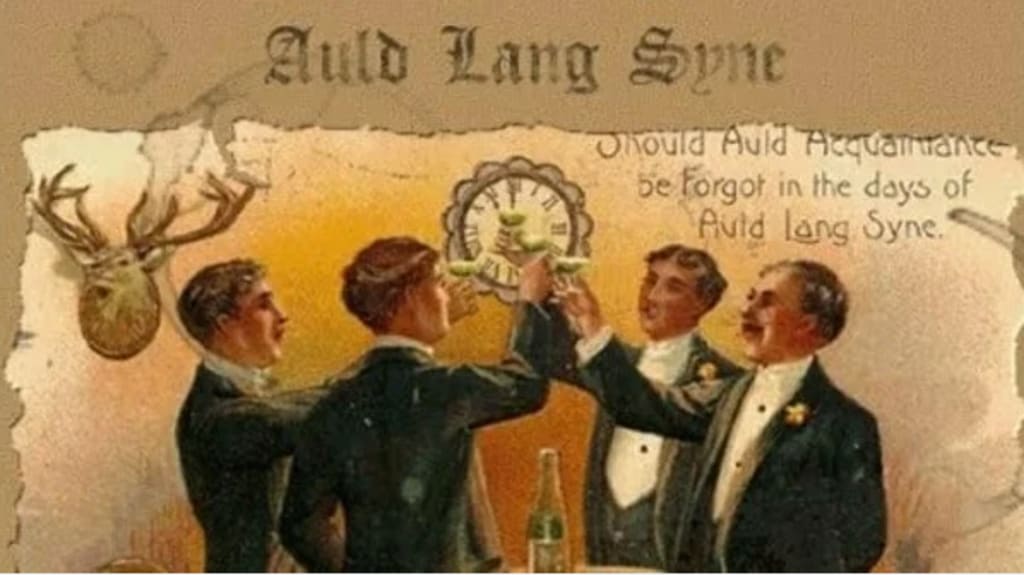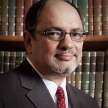History of Auld Lang Syne
What does the song mean?

Why do we sing “Auld Lang Syne” each New Year’s Eve, but do we know what it means?
The song contains words from a language that few are familiar with, in a syntax that is confusing to most, and is from a poem about friends recalling adventures they had long ago but had nothing to do with New Year’s Eve.
What does Auld Lang Syne mean?
Literally, it means Old Long Since, but the syntax is more naturally translated as since long ago or more familiarly for old times’ sake.
The phrase is in the Scots language, which goes back to the 7th century. A great deal of Scots literature was written in the 15th and 16th centuries. When King James VI of Scotland became King James I of England, Scotland, and Ireland in 1603, the Scottish upper classes had adapted and Anglicized their speech and writing, developing Scottish Standard English. But the Scots language experienced a revival among Scottish poets such as Alan Ramsay in the early 18th century and Robert Burns in the later 18th century.
Where did Auld Lang Syne come from?
Robert Burns, considered the national poet of Scotland, wrote in a combination of vernacular Scots and Scottish English. In 1788, Burns wrote “Auld Lang Syne,” which is the title and key phrase of the poem. When he submitted the manuscript to the Scots Musical Museum, he said of it:
“The following song, an old song, of the olden times, has never been in print, nor even in manuscript until I took it down from an old man.”
The phrase appeared in Scottish song as early as 1588, but Burns added a few verses of his own to the old song such that the ballad subsequently became a standard song in Hogmanay, the Scottish name for New Year celebrations.
“we’ll take a cup of kindness yet” and
“we’ll take a right good-will draught”
In Scotland, why were New Year celebrations more important than Christmas?
Hogmanay, the Scottish New Year — from the Anglo-Saxon “haleg monath,” meaning holy month or the Scandanavian “hoggo-nott,” meaning yule — was an important holiday in Scotland and for a time overshadowed even Christmas in popular observation. Here’s why:
- During the Scottish Protestant Reformation in the 1560s, John Knox brought the teaching back from John Calvin in Geneva. Scottish Presbyterians and Puritans avoided Christmas celebrations due to their accumulation of various superstitions or Roman Catholic practices.
- In 1583 the Glasgow Kirk ordered the excommunication of those who celebrated Yule. In 1640, the Scottish Parliament passed a law banning “Yule vacations… and all observation thairof.“
- Even following the end of the Calvinistic Puritan rule of Britain under Oliver Cromwell and the “restoration of the monarchy” with King Charles II to the English throne, Scotland still did not warm to Christmas.
- The ban on Christmas Day in Scotland, though repealed in 1712, was not technically restored as a public holiday in Scotland until 1958. During those 318 years, Hogmanay rose in popularity.
How did Auld Lang Syne become popular in America?
Scottish immigrants brought it with them, where it took on a more American English spelling. In the 20th century, Guy Lombardo and His Royal Canadians made the song an institution as they performed it on the radio and later in television broadcasts from New York’s Times Square as “the ball” dropped each New Year’s Eve from 1939 to 1977.
Should old acquaintance be forgot,
and never brought to mind?
Should old acquaintance be forgot,
and old lang syne?
CHORUS:
For auld lang syne, my dear,
for auld lang syne,
we’ll take a cup of kindness yet,
for auld lang syne.
Singing Auld Lang Syne has become a fixture in New Year’s Eve tradition. It appears in movies like It’s A Wonderful Life, Mr. Smith Goes to Washington, Oceans Eleven, Forrest Gump, Elf, and a couple of eponymous films. It often evokes lifting a glass in toasting friends, remembering the past, and a tear of nostalgia.
While it is not a traditional holiday movie, the romantic comedy When Harry Met Sally sets up the question about the meaning of Auld Lang Syne at the end of the film at a New Year’s Eve party where Billy Crystal, as Harry asks Sally:
“What does this song mean? My whole life, I don’t know what this song means.
I mean, ‘Should old acquaintance be forgot?’ Does that mean that we should forget old acquaintances, or does it mean if we happened to forget them, we should remember them, which is not possible because we already forgot them?”
Now you know what it means.
Bill Petro, your friendly neighborhood historian
Subscribe to have future articles delivered to your email. If you enjoyed this article, please consider leaving a comment.
About the Creator
Bill Petro
Writer, historian, consultant, trainer
https://billpetro.com/bio






Comments
There are no comments for this story
Be the first to respond and start the conversation.